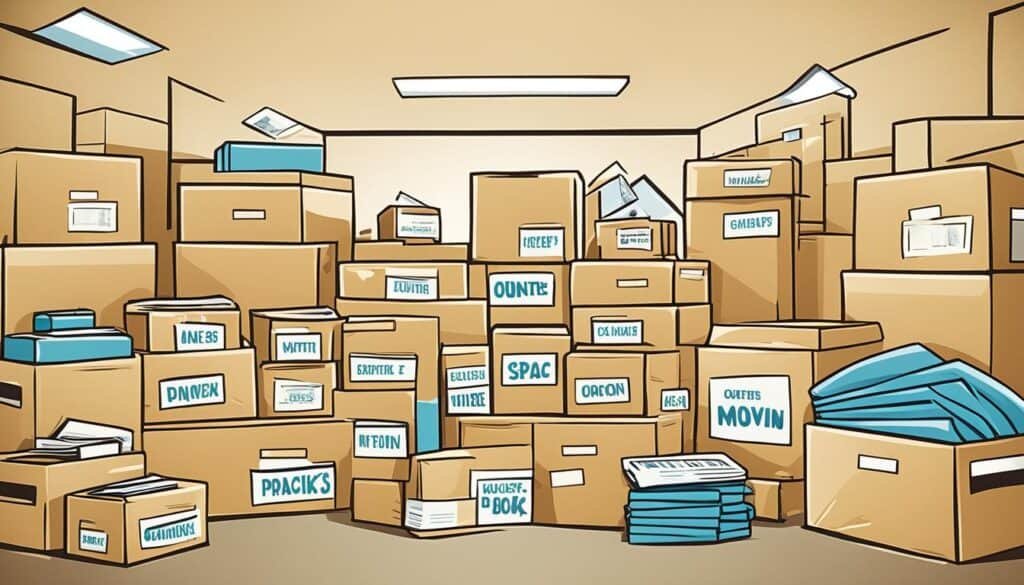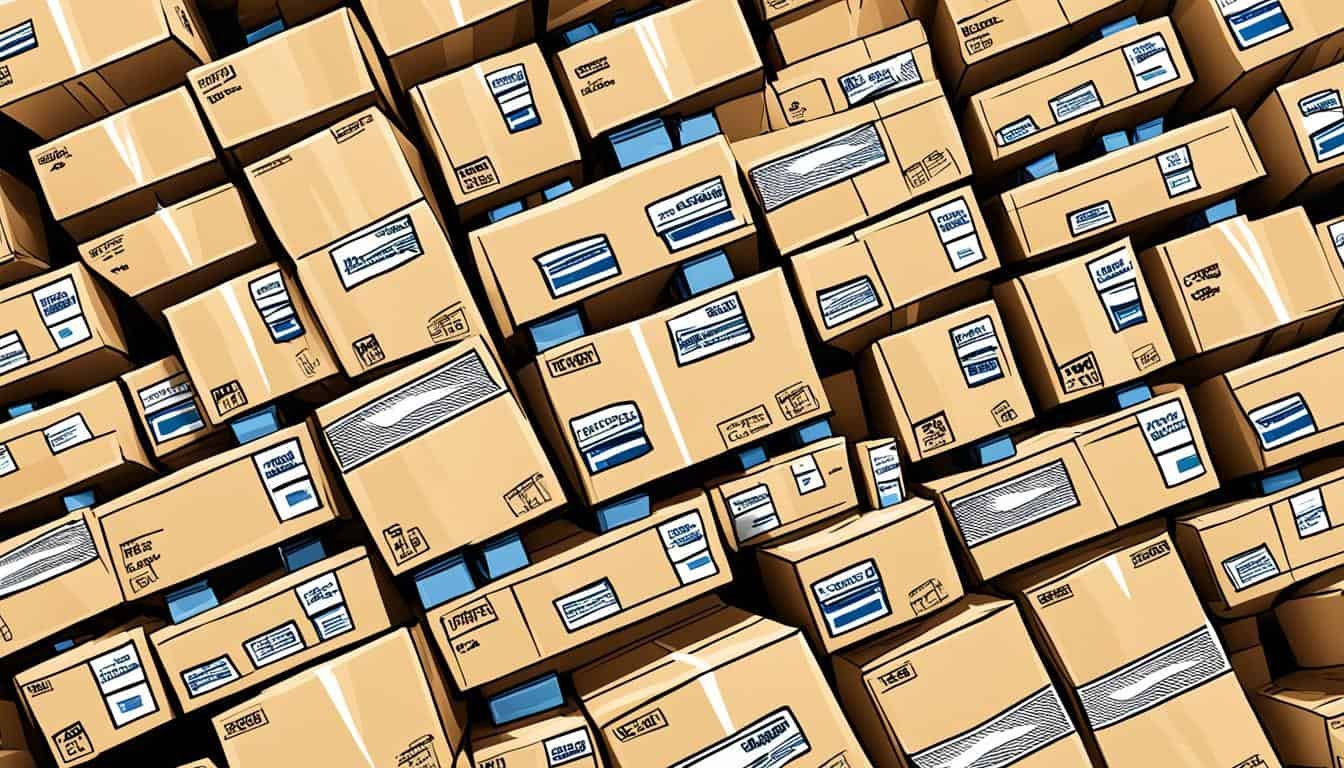As you prepare for a move in South Africa, one question might stand out: do movers expect everything in boxes? The answer lies in the planning phase, where the alignment of packing guidelines for movers with your preparations is critical. Before you commence packing, it’s essential to understand how to prepare for a move. While securing enough boxes is paramount, it’s not just about quantity. The size of your residence, the total room count, your furniture’s volume, and the character of your possessions all play into the equation of how many boxes you’ll need—and what type.
Accuracy in size and type ensures that each item, whether delicate glassware or hefty books, receives the protection it deserves in transit. Those unanticipated items? They’re why it’s smart to have a few extra boxes at hand. And when we talk about specialty items, they require special attention, such as distinct boxes designed to shield against damage. What’s more, assembling a robust moving supplies checklist is an indispensable part of your moving strategy, ensuring that every detail, no matter how minor, is considered.
Key Takeaways
- Estimate box numbers accurately, factoring in the distinct requirements of your items for secure transport.
- Select boxes based on the nature of each item, considering both size and durability needs.
- Consider using moving kits tailored to the size of your residence for a comprehensive packing solution.
- Prepare extra boxes for last-minute packing and safeguard specialty items with appropriate containers.
- Use a detailed moving supplies checklist to account for all packing essentials and prevent oversights.
Understanding the Role of Boxes in Your Move
As the foundation of any successful move, selecting the right kind and amount of boxes can make the difference between a chaotic experience and an organized transition. Estimating the quantity of boxes is not merely about having enough to pack your possessions; it’s about understanding moving company packing requirements and optimizing the safety and transportability of each item.:
Why Estimating Box Quantities is Essential
Striking a balance when gauging the right number of boxes for your belongings is key. Cost-effectiveness and the protection of your possessions rest upon this critical preparation step. Too few boxes could mean overstuffed containers and a greater risk of damage, whereas too many would be an unnecessary expense. To ensure a smooth moving day, it’s advisable to comprehend how to prepare for a move with meticulous planning.
Moving Company Packing Requirements
Movers have established guidelines designed to streamline the moving process. Not conforming to these guidelines can result in complications during transport. Adhering to moving company packing requirements includes packing heavy items such as books in small boxes and lighter, voluminous objects like linens and pillows in larger ones. This not only makes it easier for movers to handle but also preserves the integrity of your valuables during the move.
Types of Items Movers Won’t Pack
Moving companies are strict about what they can transport for valid reasons. A common list of items movers won’t pack includes hazardous materials, perishables, and flammable items. For the safety of everyone involved and to adhere to legal mandates, these items are left for individuals to handle personally. Thus, when learning how to prepare for a move, segregating these items beforehand is crucial.
Additionally, take note of personal items of sentimental or high value. These should be kept with you during the move:
- Legal documents
- Valuables (jewelry, money, etc.)
- Personal electronics
Efficient packing is more than simply filling up boxes. It involves an understanding of the practical and logistical aspects of moving. By being informed about these requirements and restrictions, you can embark on your relocation journey with confidence, knowing that your belongings are packed correctly and ready for transport.
Do Movers Expect Everything in Boxes?
When it comes to relocating in South Africa, the expectation from professional movers generally leans towards having most items securely packed in boxes. The reason is clear: boxes offer a reliable means for transporting belongings, enabling efficient stacking and organization within the moving truck. Still, this isn’t a rigid requirement, acknowledging that not everything you own will fit neatly into a cardboard cube.
Moving company packing requirements may vary, but they typically include the provision of specialized packing services for items that defy standard boxing. This could range from bulky furniture to delicate heirlooms. Hence, it is crucial to understand what movers anticipate in terms of packaging to ensure a seamless move.

- Standard Items: Clothes, books, kitchenware, and other common household items should be packed in boxes.
- Specialty Items: Movers can provide custom solutions for irregularly shaped or delicate objects.
- Communication: Clearly discuss with your moving company which items you will pack and which require their expertise.
Review this table for a quick guide on movers’ expectations:
| Item Category | In Boxes? | Special Packing Service? |
|---|---|---|
| Standard Household Items | Yes | No |
| Large/Awkward Items | No (Special Cases) | Yes |
| Fragile or Valuable Items | Preferably | Yes (if needed) |
| Personal or Sensitive Documents | Recommended | No (Pack yourself) |
Ultimately, while the preference for packing most items in boxes is clear, there is room for flexibility depending on the nature of your possessions. Discussing moving company packing requirements for any exceptional pieces is a good practice to avoid misunderstandings and ensure the protection of all your items during transit.
Strategic Packing Tips for a Stress-Free Move
Moving can often be a challenging ordeal, but with the proper preparation and organization, it’s possible to minimize stress and streamline your entire relocation process. By adhering to established packing guidelines for movers and arming yourself with a methodical approach to how to prepare for a move, you can transform a daunting task into a series of manageable steps. Employing these strategies not only ensures safety and efficiency, but it also protects your treasured possessions throughout the transition to your new home.
Packing Checklist: Essential Supplies for a Move
An essential component in preparing for a move is creating an exhaustive packing checklist. This list should cover all the necessary supplies, guaranteeing you don’t find yourself without something crucial mid-pack. It must include an assortment of box sizes, packing tape, bubble wrap for fragile items, permanent markers for labeling, durable moving blankets for furniture, and a pair of scissors. Having these supplies at hand will facilitate a smoother packing experience and safeguard your items against damage during the move.
Choosing the Right Boxes for Different Household Items
Choosing the right boxes is not just about quantity but also about suitability. Allocating heavy and dense items to small boxes and lighter, more voluminous things to larger containers can help prevent physical strain and avoid the risk of boxes tearing under weight. Proper selection according to contents is a crucial step recommended by packing guidelines for movers and can lead to a significant reduction in potential damages to your possessions during transit.
Maximizing Space: Efficient Packing Techniques
Efficiency is key when packing your belongings. Maximizing space through proven packing techniques not only makes the best use of the boxes but also simplifies the unpacking process. Organize your items by room and category and consider space-saving methods like rolling clothes or nesting items within each other. Another invaluable tip is to prepare an ‘essentials’ box, which includes items you’ll need immediately upon arriving at your destination, ensuring the essentials of your daily routine are readily available.
FAQ
Do movers expect everything to be in boxes?
While professional movers generally expect most items to be packed in boxes for secure transport, it is not an absolute requirement. There are special packing services for items that cannot be placed in standard boxes. Some items, such as large pieces of furniture or fragile antiques, may require special care and packaging techniques. In these cases, professional movers offer full house packing services, where they will carefully wrap and protect each item for safe transport. This can provide peace of mind for those with valuable or delicate belongings.
How should I prepare for a move regarding packing?
When preparing for a move, ensure you have all necessary packing materials, create an inventory of your items, and pack your belongings safely and systematically. It is crucial to have a mix of different box sizes appropriate for various items.
Why is estimating box quantities essential?
Estimating the correct number of boxes is essential for cost-effectiveness and safeguarding your items. Using the right quantity and size of boxes helps prevent overpacking, ensures easy handling, and protects your belongings during the move.
What are the packing requirements of moving companies?
Moving companies require that items be properly packed to prevent damage during transport. They may provide guidelines on box sizes and packing methods. Heavy items should be in small boxes, while lighter ones can go into larger boxes to make lifting easier.
What types of items will movers not pack?
Movers typically will not pack hazardous materials, perishables, personal items like passports or legal documents, and flammable items. You will need to transport or dispose of these items yourself according to safety regulations.
What supplies should I include in my packing checklist for a move?
Your packing checklist should include various sizes of boxes, packing tape, bubble wrap, labels, permanent markers, scissors, and moving blankets. It’s also helpful to have specialty boxes for fragile items and furniture covers.
How do I choose the right boxes for different household items?
Select small boxes for heavy items such as books and tools to make lifting easier. Use larger boxes for lighter items like bedding, pillows, and clothing. Ensure the boxes are sturdy enough to protect their contents.
What are some efficient packing techniques for maximizing space?
Efficient packing techniques include nesting smaller items inside larger ones, rolling clothes instead of folding, using vacuum seal bags, and filling empty spaces with soft items to prevent shifting. Labeling each box by room and content helps organize the move.




